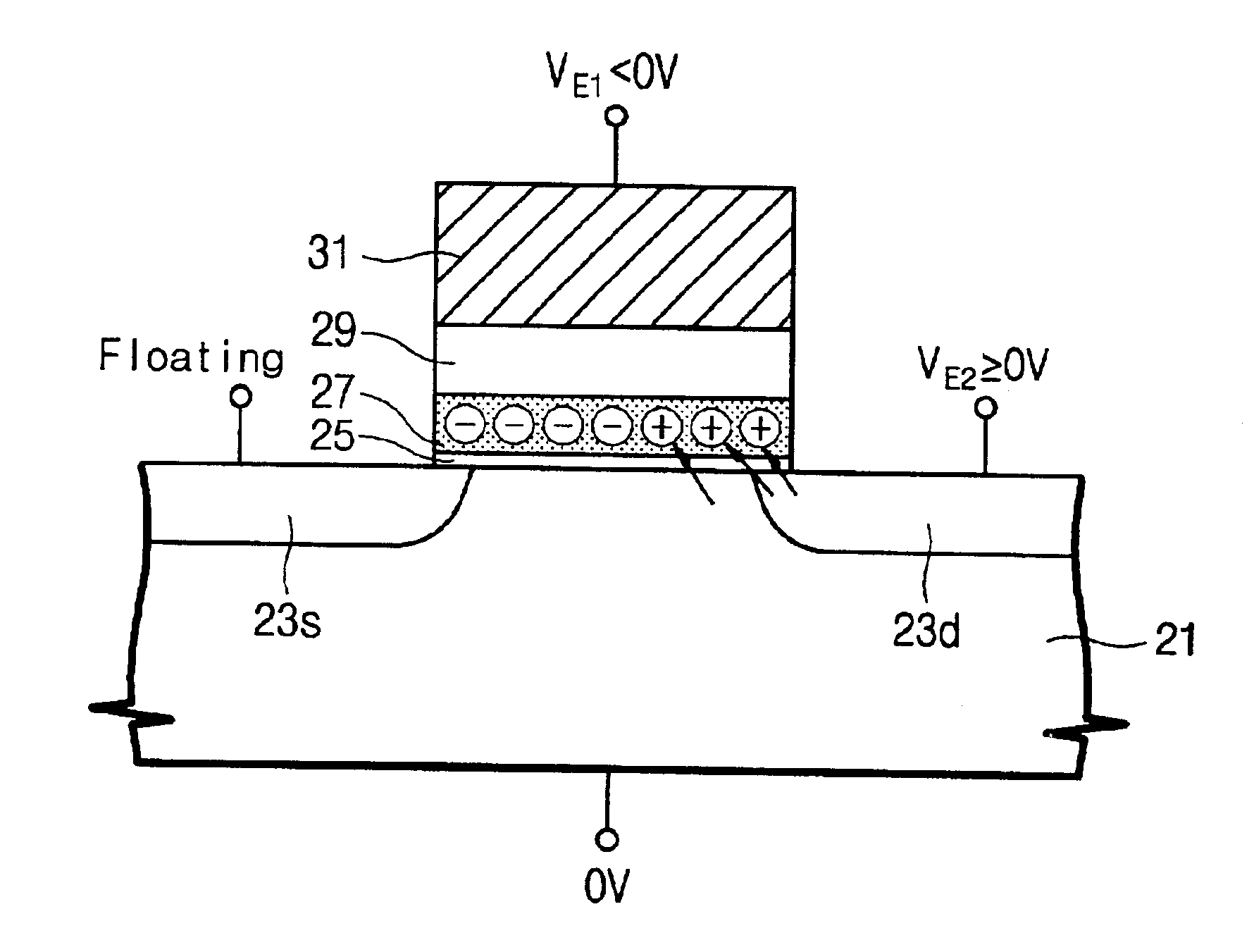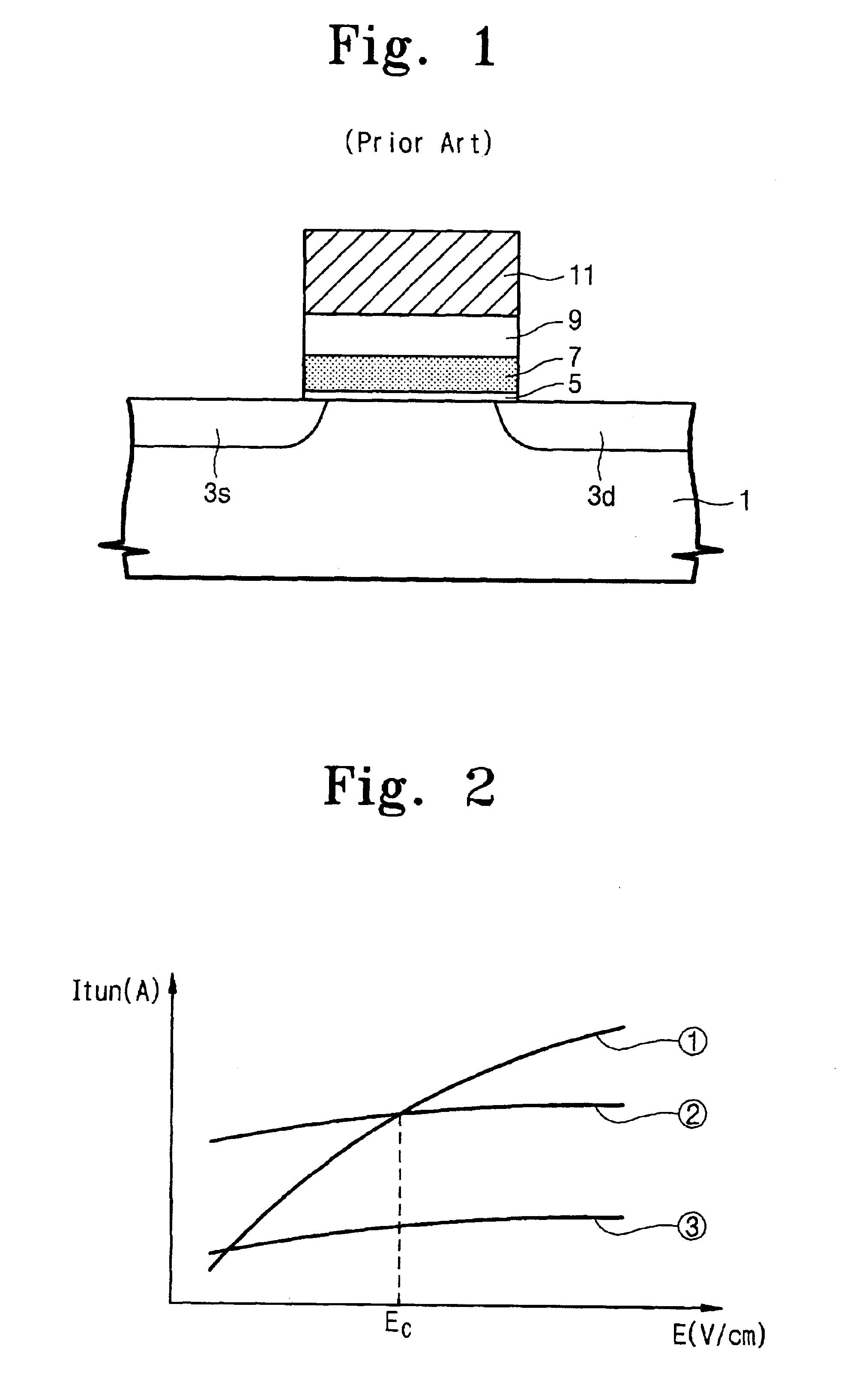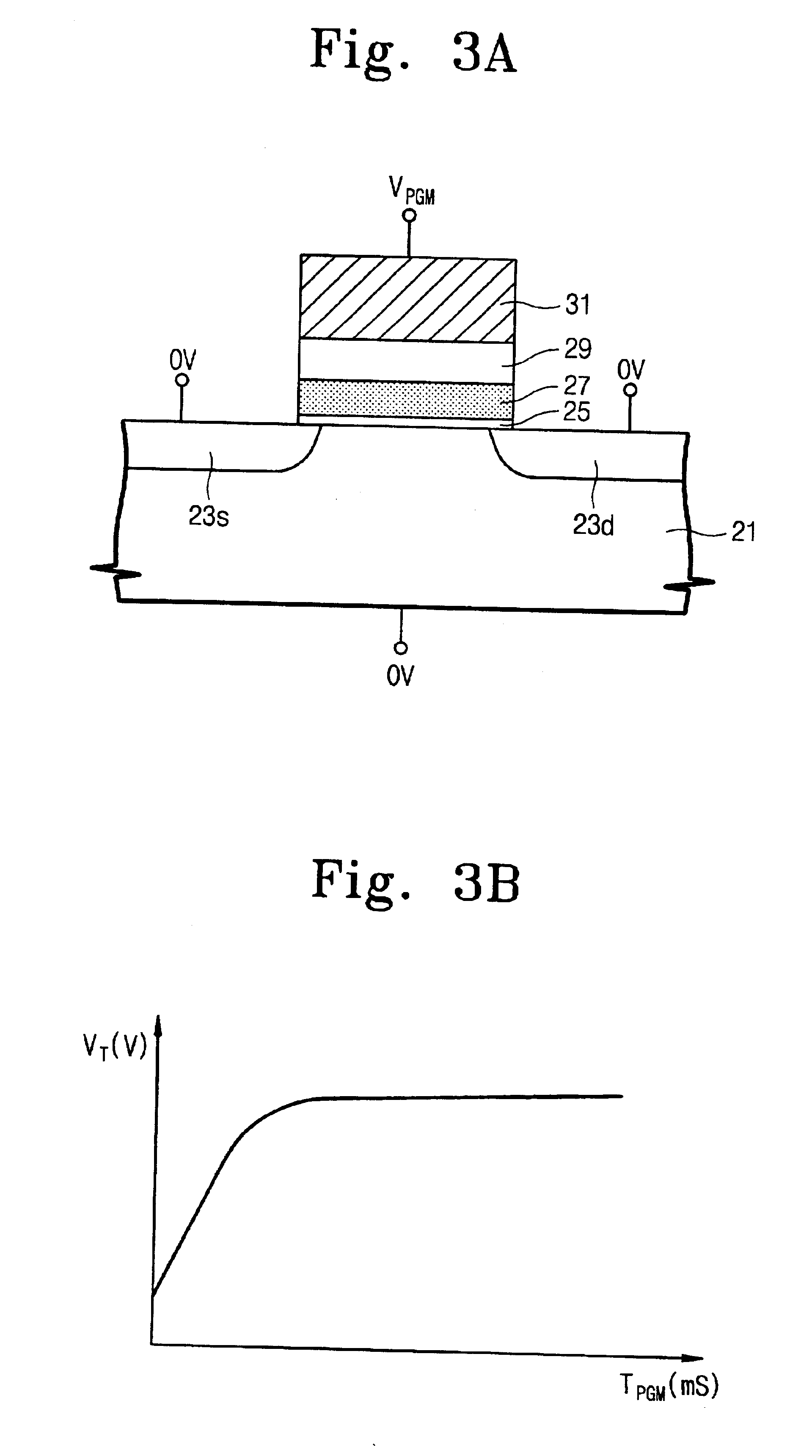Operating a non-volatile memory device
a non-volatile memory and device technology, applied in the direction of static storage, digital storage, instruments, etc., can solve the problems of difficult to increase the surface area difficult to follow the processing of the memory device, complex patterning process of the floating gate, etc., to achieve the effect of improving the data retention characteristic and erasing the operation
- Summary
- Abstract
- Description
- Claims
- Application Information
AI Technical Summary
Benefits of technology
Problems solved by technology
Method used
Image
Examples
first embodiment
[0057]Referring to FIG. 4A, the first erasure voltage VE1 is applied to the gate electrode 31 of the SONOS cell transistor which has been programmed by the method explained in FIG. 3A. Also, the semiconductor substrate 21 is grounded, and the second erasure voltage VE2 is applied to the source region 23s. At this time, the drain region 23d is floating. Thus, differently from the first embodiment, holes are injected into the charge trapping layer 27 around the source region 23s by a source side injection.
[0058]FIG. 4B is a cross-sectional view for explaining a method of reading the erased SONOS cell transistor illustrated in FIG. 4A, according to another preferred embodiment of the present invention.
[0059]Referring to FIG. 4B, in the SONOS cell transistor that has been erased by the source side injection, an N-type channel inversion layer 22s is formed in the channel region around the source region 23s. The channel inversion layer 22s is formed by holes trapped in the charge trapping...
third embodiment
[0082]In the third embodiment, the second erasure voltage VE2 can be applied to all of the bit lines. In this case, all SONOS cell transistors Cj connected to the selected word line WLj are erased by the source and drain sides injection. That is, a page erasing operation is performed. Thus, in the event that the page erasing operation is performed through the source and drain sides injection, a read operation can be achieved using either the backward read mode or the forward read mode.
[0083]According to the erasing operations described in the first, second, and third embodiments of the present invention, it is impossible to simultaneously erase all cell transistors in one block. Thus, embodiments of the present invention additionally provide methods of simultaneously erasing all cell transistors in the block, and selectively programming at least one cell transistor out of the erased cell transistors in the block or all cell transistors connected to one word line. The erase methods, ...
PUM
 Login to View More
Login to View More Abstract
Description
Claims
Application Information
 Login to View More
Login to View More - R&D
- Intellectual Property
- Life Sciences
- Materials
- Tech Scout
- Unparalleled Data Quality
- Higher Quality Content
- 60% Fewer Hallucinations
Browse by: Latest US Patents, China's latest patents, Technical Efficacy Thesaurus, Application Domain, Technology Topic, Popular Technical Reports.
© 2025 PatSnap. All rights reserved.Legal|Privacy policy|Modern Slavery Act Transparency Statement|Sitemap|About US| Contact US: help@patsnap.com



